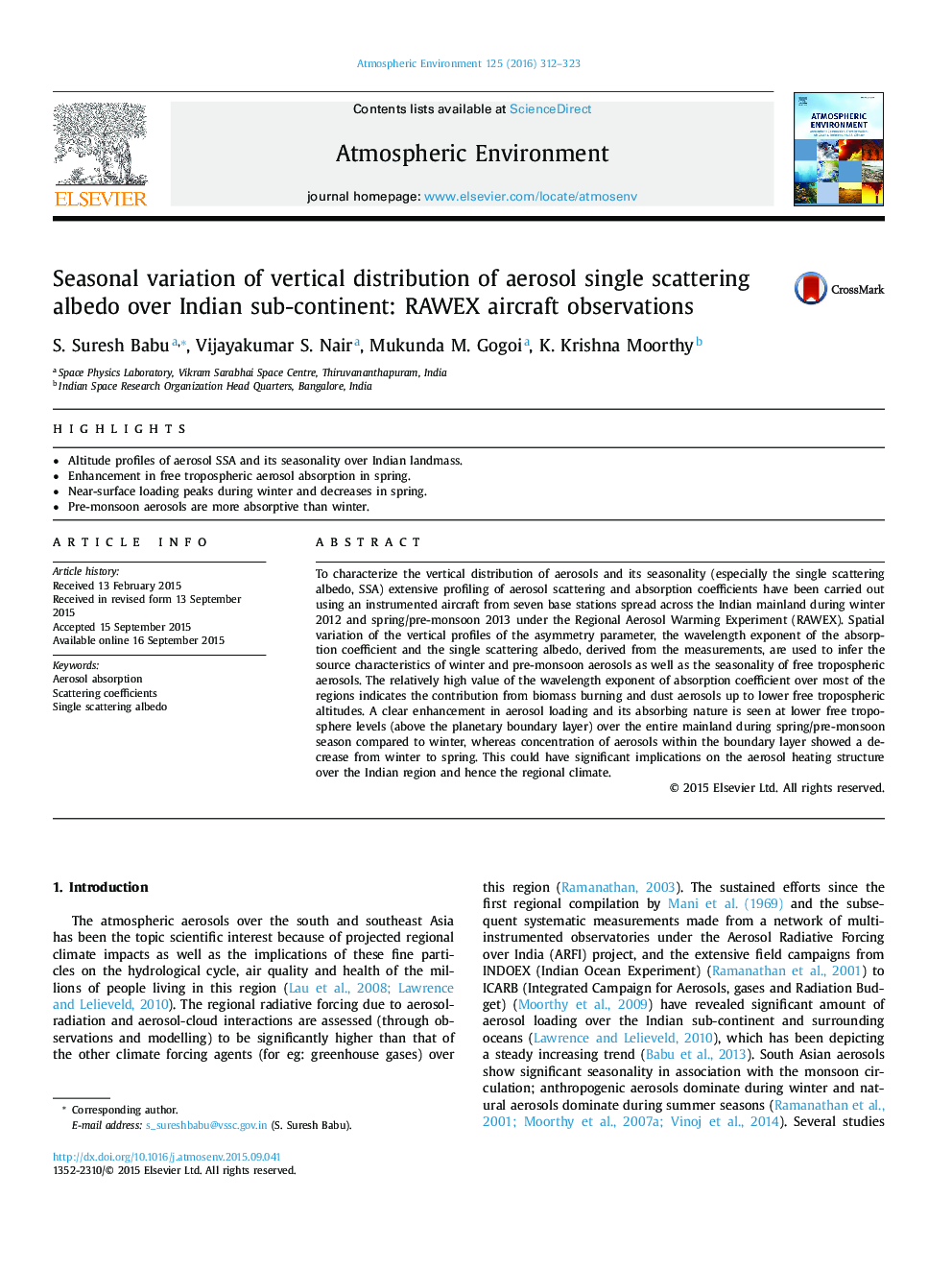| Article ID | Journal | Published Year | Pages | File Type |
|---|---|---|---|---|
| 4438063 | Atmospheric Environment | 2016 | 12 Pages |
•Altitude profiles of aerosol SSA and its seasonality over Indian landmass.•Enhancement in free tropospheric aerosol absorption in spring.•Near-surface loading peaks during winter and decreases in spring.•Pre-monsoon aerosols are more absorptive than winter.
To characterize the vertical distribution of aerosols and its seasonality (especially the single scattering albedo, SSA) extensive profiling of aerosol scattering and absorption coefficients have been carried out using an instrumented aircraft from seven base stations spread across the Indian mainland during winter 2012 and spring/pre-monsoon 2013 under the Regional Aerosol Warming Experiment (RAWEX). Spatial variation of the vertical profiles of the asymmetry parameter, the wavelength exponent of the absorption coefficient and the single scattering albedo, derived from the measurements, are used to infer the source characteristics of winter and pre-monsoon aerosols as well as the seasonality of free tropospheric aerosols. The relatively high value of the wavelength exponent of absorption coefficient over most of the regions indicates the contribution from biomass burning and dust aerosols up to lower free tropospheric altitudes. A clear enhancement in aerosol loading and its absorbing nature is seen at lower free troposphere levels (above the planetary boundary layer) over the entire mainland during spring/pre-monsoon season compared to winter, whereas concentration of aerosols within the boundary layer showed a decrease from winter to spring. This could have significant implications on the aerosol heating structure over the Indian region and hence the regional climate.
